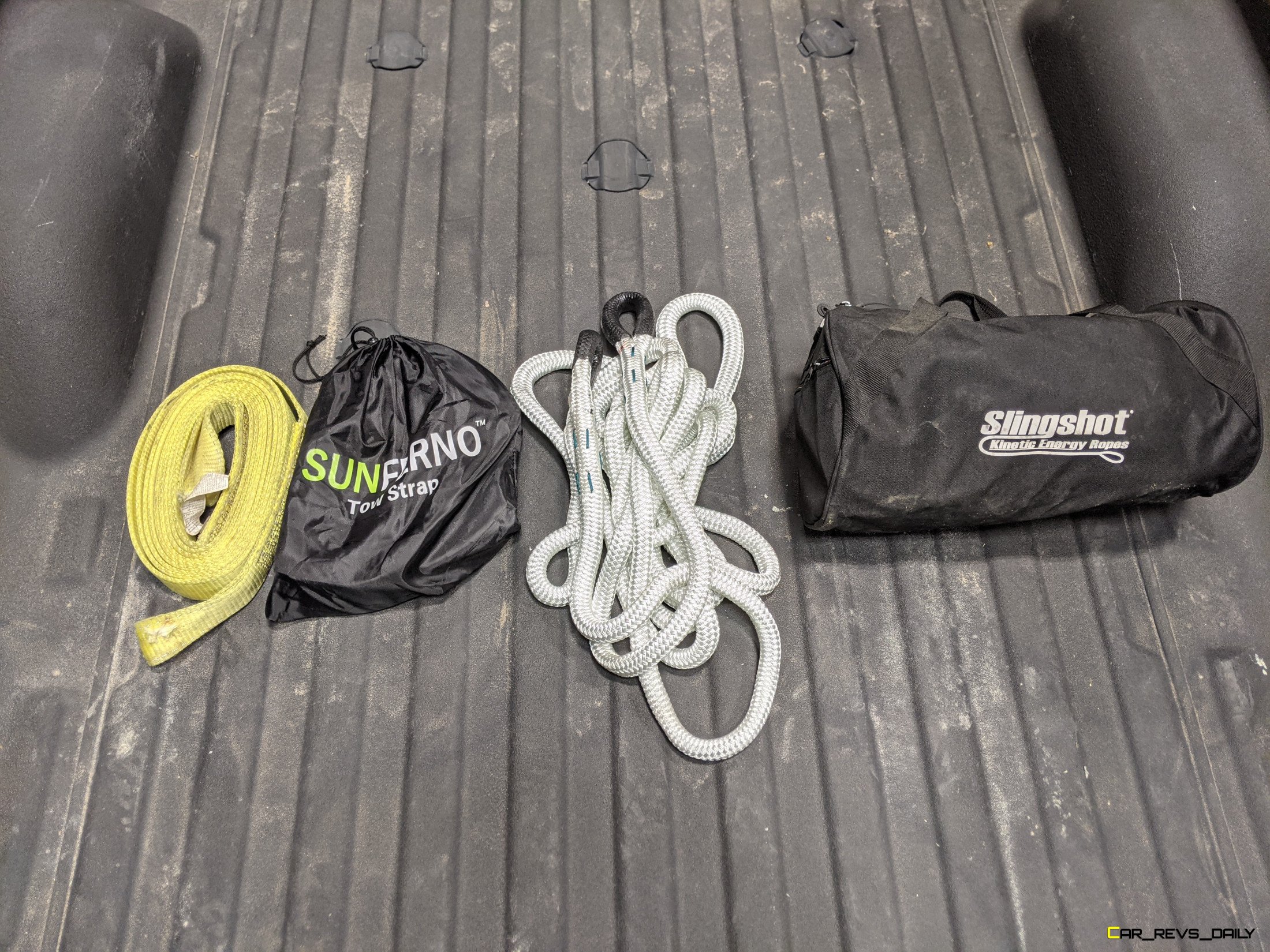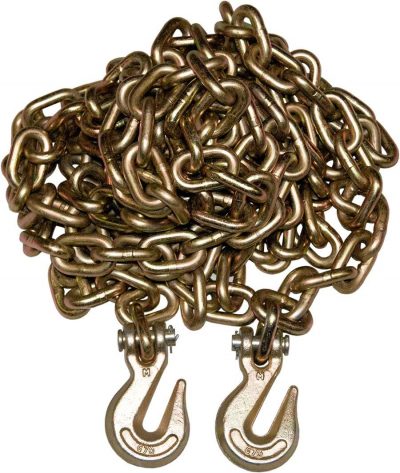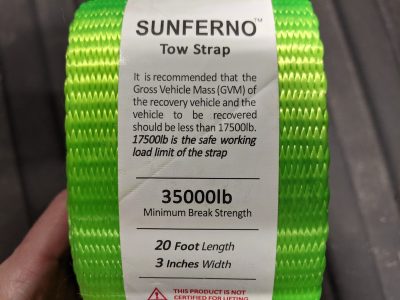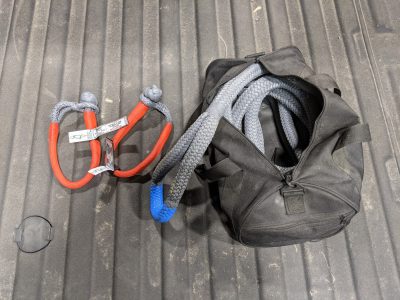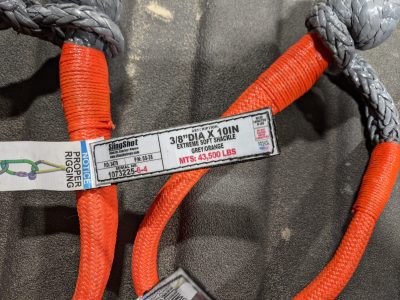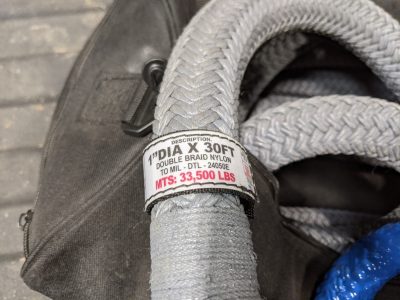Chains, Straps, or Ropes? Best Recovery Tool
We’ve all been there or come across someone who has. Whether off playing in the sand or mud, or driving down an icy highway and sliding into a ditch, most of us have seen, or been in, a vehicle that needs recovered. We tested a variety of recovery tools for towing to see which one is best for any given situation. What should you store in your recovery vehicle?
Chain
Decades ago, chains were the main method used to tow a disabled or stuck vehicle. They are widely available and can serve many purposes. Compared to the other items on this list, chains are the most durable. They can be drug across any terrain, run over sharp edges, and just plain be abused without being destroyed very quickly.
We tested an old 3/8” chain similar to this one and found it to be heavy to manipulation and jerky while towing. It’s working load is 6,600 lbs with a break strength of 26,400 pounds.
Pros
- High wear resistance
- Can be used in many applications
Cons
- Heavy
- Doesn’t stretch
- Bulky
- Low strength to weight ratio
Static Strap
These are the tradition straps that are commonly seen towing vehicles on the road. Many have tow hooks on each end. They are one of the least expensive recovery tools, often under $20. When recovering vehicles, it is important not to jerk these straps as they do not stretch. Accelerate slowly and keep the strap taught to avoid any harsh movements.
We tested an old strap similar to this TGL strap that we had laying around. The working load for our model is 5667 pounds with a minimum breaking strength of 17,000 pounds. We prefer loops on the ends to hooks, as this allows for a fully closed system when using shackles. Being fully enclosed prevents a strap from disconnecting and falling off while in use. The problem with loops is that shackles are also needed. The straps with hooks on the end can be connected quicker and easier without extra equipment.
Pros
- Inexpensive
- Often include hooks
- Small stored size
Cons
- Don’t stretch
- Little wear resistance
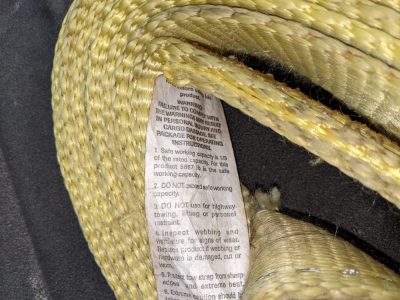
Dynamic Strap
Dynamic straps have some stretch to them, but not as much as a dynamic rope. They are good for flat towing and vehicle recovery as they will reduce the jerk and related reaction force. Can be purchased in various sizes depending on weight ratings.
We used a Sunferno 3 inch x 20 foot strap in our testing. We found that it had significantly less jerk than the chain and static strap but wasn’t as smooth as the recovery ropes. This one has a high working load of 17,500 pounds and a minimum breaking strength of 35,000 pounds, which means it won’t stretch much when towing lighter vehicles. This is the strap that is often stored in our test vehicles for normal trips and very light off-roading. It’s small and easy to store, yet it is very strong and has the dynamic aspect to it for smoother towing.
When recovering a stuck vehicle with a dynamic strap or rope as the recovery tool, a little momentum can be added to safely jerk the stuck vehicle free. It’s always best to start of easy and add momentum as needed. It’s also a good idea to put a damper on the strap or rope to reduce the projectile aspect when a strap or rope breaks.
Pros
- Lightweight
- Compact stored size
- Dynamic with 7% stretch
- Inexpensive
Cons
- Not as stretchy as double braid nylon rope
- Little wear resistance
HomeMade Dynamic Rope
Making your own recovery rope can be a fun exercise. Learning new skills is always useful, and in this case, can help develop the needed skills to repair a rope that breaks while on the trail. For our testing we purchased 33 feet (makes it about 30 feet after making eyelets) of ¾-inch double braid nylon rope typically used for marine applications. It took some time make the eyelets how we wanted them, but for less than $50 we had a usable recovery rope with plastidipped ends. There are many how to videos on YouTube for making an eyelet in a rope, we also added a lock stitch to ours for extra security. This makes for an inexpensive but very capable recovery tool.
In our testing, this method had the most stretch and the size was paired perfectly for the vehicles we were using. In order to get the most out of a dynamic recovery rope the size of the rope needs to be paired with size of vehicles in the operation. Too strong of a rope won’t stretch well, and a rope that is too weak could break. A ¾-inch rope is the right size for roughly 5,000 to 8,000-pound vehicles.
Pros
- Lightweight
- Inexpensive
- Dynamic with up to 30% stretch
Cons
- Have to make it yourself
- Little wear resistance
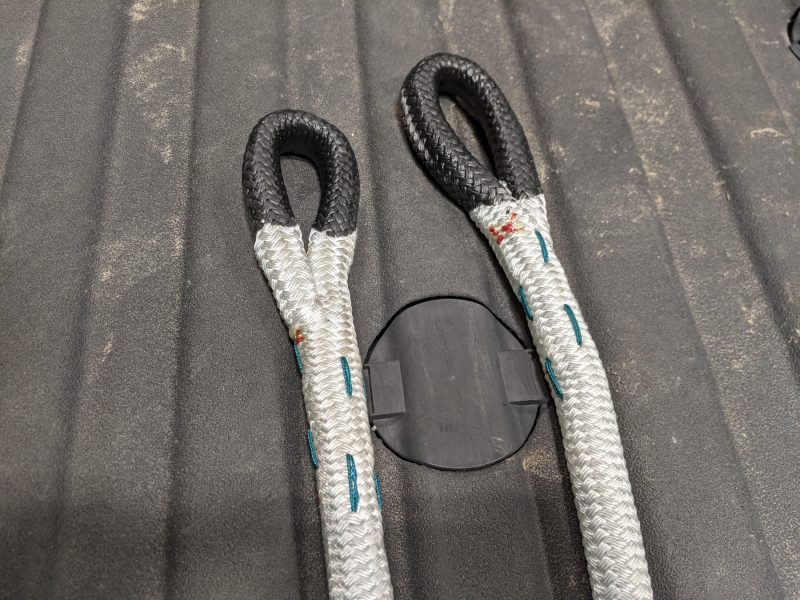
Dynamic Recovery Rope
The final rope in this test is a 7/8 inch by 20 foot Slingshot recovery rope kit. For $280 this kit comes with two soft shackles, the 7/8 rope, and a bag to put it all in.
Slingshot makes massive ropes for recovering agricultural equipment and this experience shows in their smaller ropes. One feature of this double braided nylon rope is the rubberized coating covering the whole length of the rope with additional coating on the ends. The coating decreases wear on the rope, reduces the chance of the individual fibers getting snagged, and provides extra wear protection in the eyelets which are a high wear point.
In our testing this rope was the second smoothest, because it was a little heavy for our application. The Slingshot rope is not at fault, it was purchased to recover a stuck truck pulling a heavy trailer rather than the empty truck we used in our testing. While the homemade rope had many fibers snagging on every little thing, the Slingshot rope’s coating protected it very well with no snags. The only downside to the coating is that the rope isn’t nearly as flexible and is a little difficult to put into the bag.
Pros
- Lightweight
- Compact stored size
- Dynamic with up to 30% stretch
- Good wear resistance
- Comes with soft shackles and storage bag
Cons
- Expensive
- Not as flexible
Conclusion
Wrapping up the testing we found that each recovery tool has its pros and cons. The chain is extremely durable and can be drug across any terrain without risk of serious damage. Next, static straps are inexpensive and easy to store while still being strong. Moving to a better option, dynamic straps are a good inbetweener, they allow for a small amount of stretch at a much lower price than a dynamic rope. The Slingshot dynamic rope has extra protection making it an excellent option for those who will use the rope frequently. The homemade version is inexpensive and effective for those who can’t invest a lot of money in a dynamic recovery rope, but still want the features one provides.
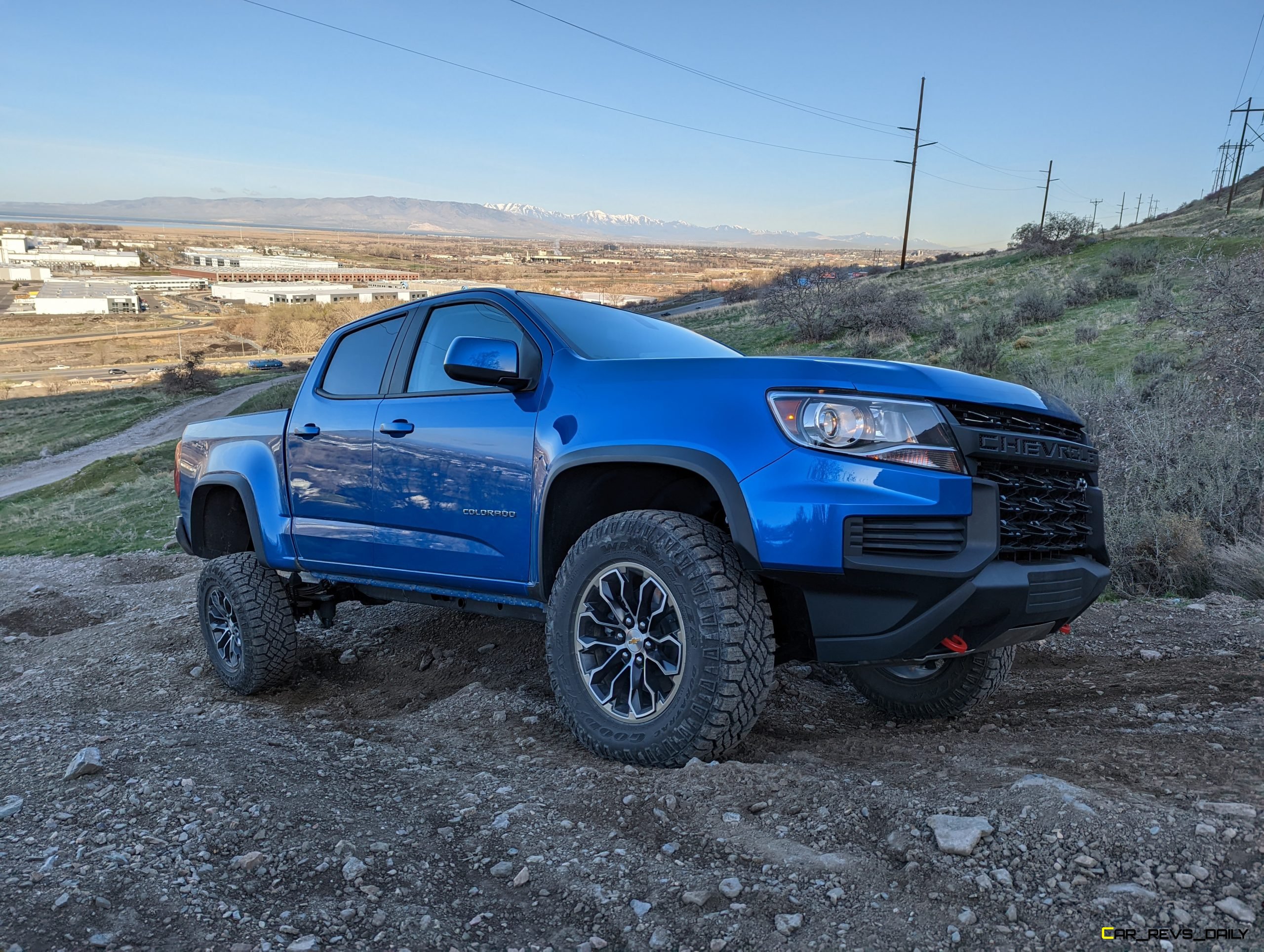
Matthew Barnes is an experienced towing expert. He works as a mechanical engineer and his day job involves testing a variety of vehicles while towing trailers of all types and sizes. Matt shares his knowledge by writing for automotive news outlets in the evenings. When he’s not working he can be found spending time in the great outdoors with his family. He enjoys camping, hiking, canyoneering, and backpacking. Whenever possible he spends time riding in or on any power sports vehicle he can find and claims he can drive anything with a motor, which probably isn’t true.
Matt lives in the Utah mountains and often posts cool off-roading videos to his Instagram and YouTube channel.

